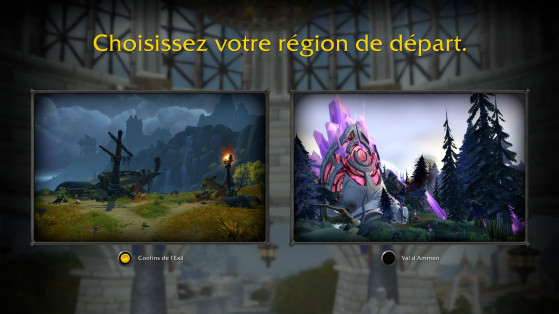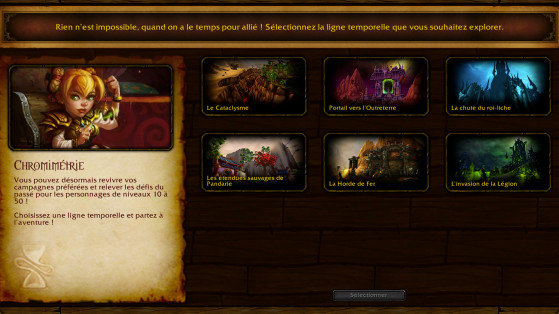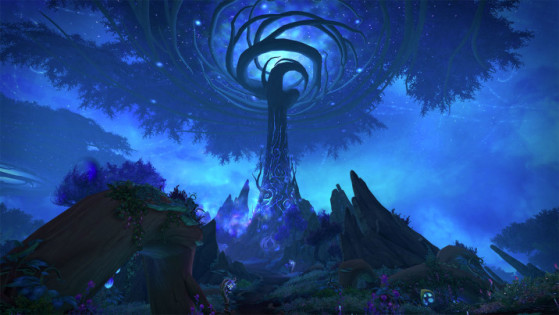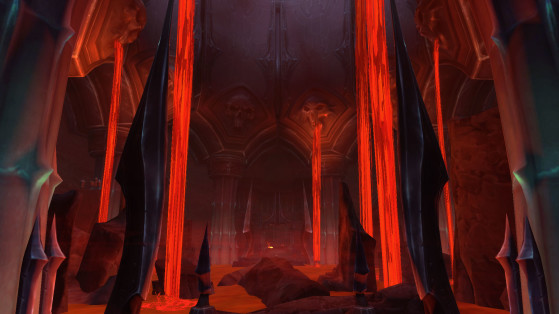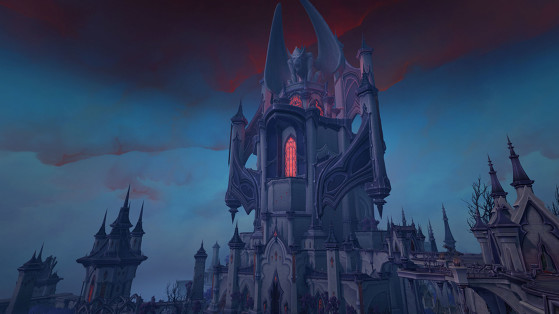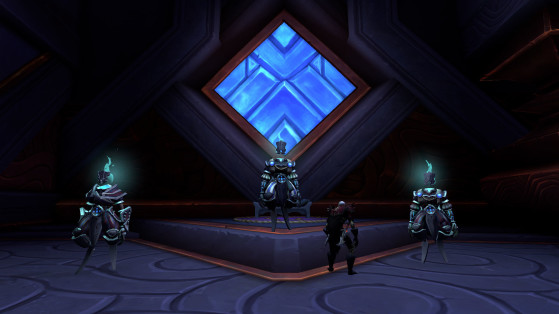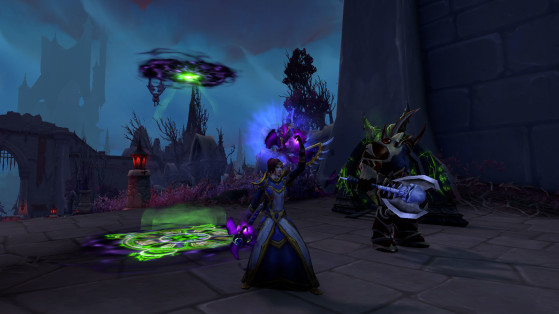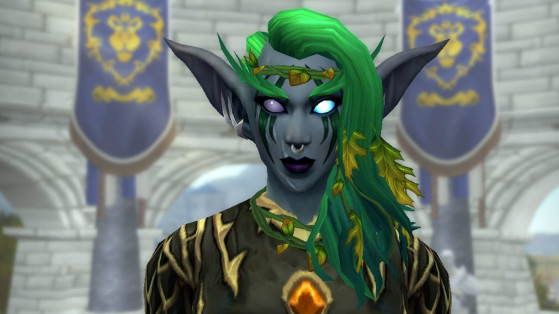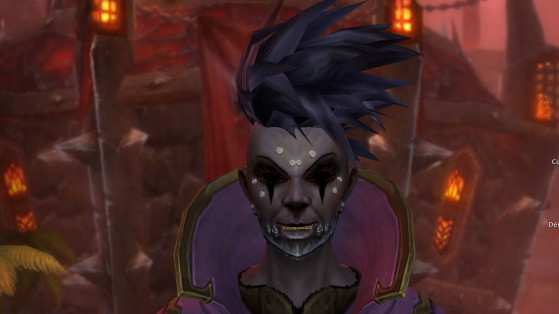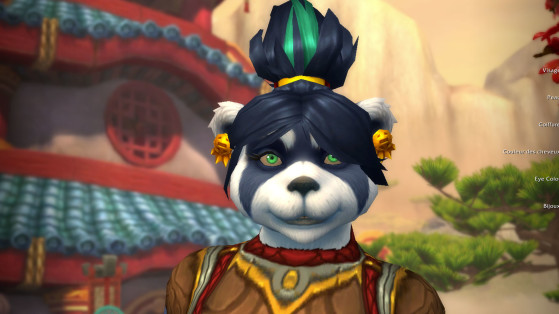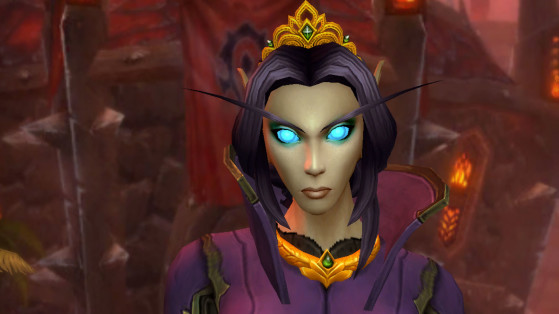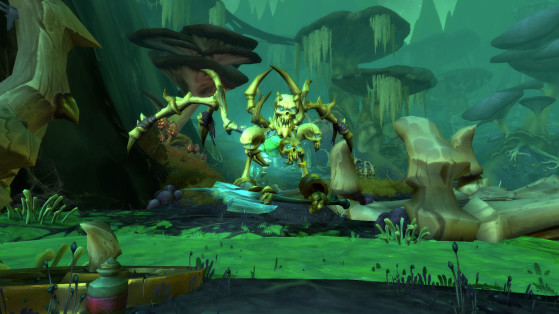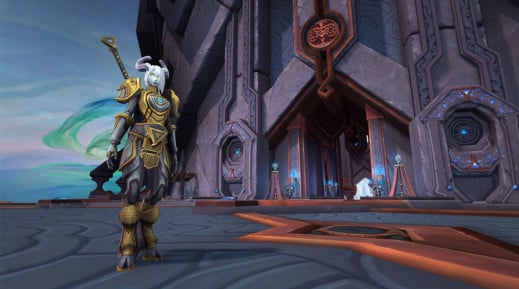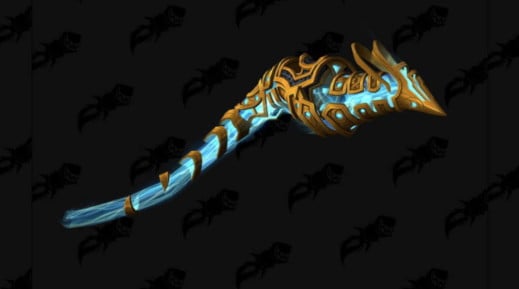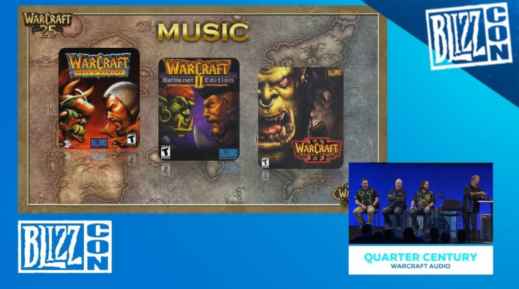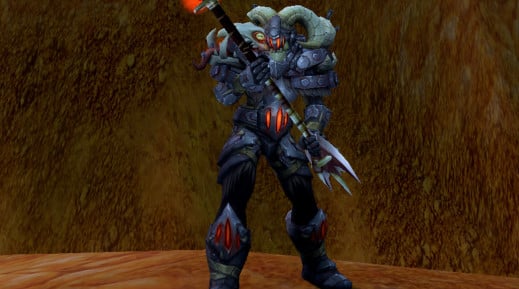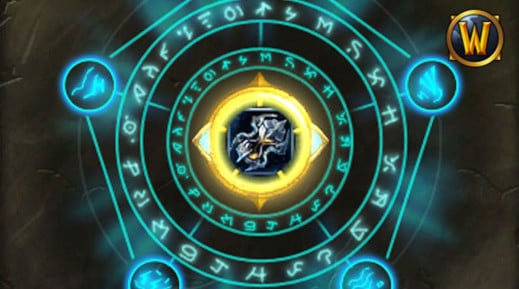After coming under heavy fire throughout its lifespan, Battle for Azeroth is finally drawing to a close. With its conclusion, the world’s eyes rest firmly upon Word of Warcraft: Shadowlands, which promises to bring back the joy of playing not just one, but several characters. We’ve been able to get our hands on Blizzard’s newest gem — here’s what we made of it.
Keeping Things Fresh
In Shadowlands, Level 120 players are brought back to Level 50 and max level has been reverted to Level 60: this is what’s known as a Level Squish, or a collective reduction in level. Though levels have been reduced, players need not worry about their characters feeling any less powerful, as items from past expansions will still be readily accessible.
In addition, character stats have been treated similarly to levels, with characters also being subject to a Stats Squish, a collective lowering of statistics. With this, Blizzard has decided to curtail damage, which has progressively ramped up across expansions, before it reaches absurd numbers. With this in place, if you deal around 60,000 DPS in retail currently, that will correlate to around 5,000 DPS in Shadowlands. In essence, this decision won't led to any actual changes in gameplay, as creatures have also had their stats reduced, so it’s merely a question of optics.
New players will also have the chance to experience some of Shadowlands' new features from the moment they step foot into Azeroth, thanks to the new starting zone: Exile’s Reach. Long-tenured players will also be able to explore this area if they so please, but it hasn’t been designed with them in mind, as Exile’s Reach instead serves as the main zone for new players.
In Shadowlands, newcomers begin their journey as Alliance or Horde soldiers sent on a mission to off the coast of Tornheim. During your voyage, you’ll end up running aground on an island and discovering the dark and mysterious events taking place upon its shores. These newfound heroes will set out on the path to mastering their chosen class, with each new spell serving a unique purpose on the island. The Paladin’s Divine Shield, for example, allows them to pass through a deadly magical barrier than can’t be traversed otherwise!
This unique zone goes against the core of gameplay of WoW and almost has its own identity to the rest of Azeroth. It concludes in a mini-dungeon that can be completed either by yourself, with the help of AI partners, or alongside other players.
But don’t think for a second that Shadowlands neglects the existing playerbase, as seasoned players will also have the option to send any newly-created characters to Exile’s Reach, making this the first time that players have been able to make their choice of starting zone.
Once you’ve reached Level 10, there are two possible outcomes, regardless of your chosen starting zone:
- New players will be directed to Kul Tiras or Zandalar to discover the plot of the recent expansion, Battle for Azeroth, which directly ties into the events of Shadowlands.
- Veteran players will either have the choice between going to Kul Tiras or Zandalar, or levelling up using content from a previous expansion, thanks to other timelines. If players wish to do so, all they have to do is go to the Embassy in, either in Stormwind or Orgrimmar, and talk to Chromie, who will offer you this choice:
Once you’ve reached level 50, seasoned players and newcomers alike will be thrown into main plot and drawn into the events of Shadowlands.
New Surroundings, New Allies
This new expansion to Blizzard’s Long-tenured MMORPG introduces a wave of new additions, with some of them being more foreseeable than others. Amongst the most readily noticeable, Shadowlands introduces six new zones, including the new neutral capital:
- Bastion, a heavenly zone inspired by the artistic depiction of paradise
- Maldraxxus, a war-torn kingdom, once the military centre of the Shadowlands
- Ardenweald, the shadowy underbelly of the Emerald Dream
- Revendreth, an immense Gothic-inspired citadel, populated by vampires
- The Maw, a desolate landscape ruled over by The Jailer, who is also known as death itself
- Oribos, the neutral capital of the Shadowlands and a mandatory place of passage for souls of the newly departed.
Each of these new zones is very distinct from one another and introduces your character to new, un-playable races, in addition to its own unique story. It appears that each zone offers up its own storyline, one that is completely disconnected from other zones. Therefore, players will have to discover the lore of each zone in order to understand how they all fit into the overarching narrative of Shadowlands.
Local inhabitants all belong to one of four major Covenants, which each hold dominion over one of four main zones in Shadowlands:
- The Kyrian Covenant of Bastion
- The Necrolords of Maldraxxus
- The Night Fae of Ardenweald
- The Venthyr of Revendreth
These new allies are not just for show; Covenants allow the player to access a vast array of unique and powerful spells that influence the way you play the game. As soon as you commit to a Covenant, you’ll receive a Covenant Signature Ability that can be used by all classes, in addition to a class specific ability later on down the line.
Example of a Covenant Signature Ability
Example of a Covenant Class Ability
You’re only able to choose a single Covenant, and while it is possible to change your selection, it comes with a heavy cost, as returning to a Covenant you’ve previously left requires such an extortionate fee that it’s nearly impossible to do so. However, if you’re not quite satisfied with your first choice, you’ll be able to change Covenant rather easily. Players shouldn’t make their choice lightly, as they should seriously consider what each Vovenant brings to the table before making their final decision.
When it comes to Covenants, balance shouldn’t really come into the equation for the average player. The majority of abilities are very strong, and even if some tend to be too restrictive, players can easily find abilities that suit them.
“But what if I choose a Covenant that gives me a good PvE ability but sucks at PvP?”
Don’t worry, Blizzard has put a lot of time into thinking about this issue. Once you’ve reached max level and chosen your Covenant, players can link their soul to a member of that faction. By doing this, they gain access to unique abilities (often passives) designed to fill in any gaps left by the Signature and Class Abilities. This feature is known as Soulbinding. Here are some examples:
Classic Additions
The main feature of this expansion is undoubtedly a complete overhaul of the way that World of Warcraft handles Azerite farming. Of course, players who have already obtained these powers will retain them, but once they step foot in Shadowlands, they’ll see them quikcly completely outclassed. The reign of The Heart of Azeroth & Azerite is over — well almost.
I say almost because Anima & Renown is set to take over in Shadowlands. We’ve not been able to try it out yet, but according to developers it will be nothing like artefact power. This system allows players to get their hands on certain bonus cosmetics, champions, and “others” by taking on Torghast, Tower of the Damned and gaining Renown and Anima in the process. Renown gives you a weekly outlet to climb the ranks of your Covenant and access different rewards within its sanctum as a result.
Shadowlands does little to revolutionise Blizzard’s formula when it comes to new expansions. In addition to the necessary new zones, the new expansion adds a total of eight dungeons for players to take on, with half being available from Level 50 and half reserved for max-level players. These are, in order:
- The Necrotic Wake
- Plaguefall
- Mists of Tirna Scithe
- Halls of Atonement
- Theater of Pain
- The Other Side
- Spires of Ascension
- Sanguine Depths
These eight completely new and inviting instances each bring a breath of fresh air compared to the stuffy dungeons from Battle for Azeroth. This time round, most of them take place outside, so wave goodbye to BFA’s frustrating and often buggy dungeons!
But what will be especially captivating for a large number of players will be the 9th instance, which Blizzard claim will be infinite: Torghast, Tower of the Damned. Designed to allow the player to progress at their own speed, this new take on a dungeon lies at the heart of the high level content for this expansion. Torghast’s corridors shift after every visit, as do the creatures that inhabit its interiors. This dungeon lerts players get their hands on much-needed endgame gear that will set you on the path to the legendary items that Shadowlands has to offer.
Yes, that’s right — legendary items are making their grand return to Retail. But with this re-introduction, the way to get them has changed. While in Legion they were solely low-percentage drops, this time, in Shadowlands, the burden is now on the players. You’ll receive basic recipes for these legendary items that you can take to master Leatherworkers, Blacksmiths, and Tailors. These crafts can then be reinforced with special powers that you receive from Torghast. This allows you to create a legendary item with your desired power and characteristics. This is fantastic news, as it not only provides a significant guaranteed jump in power, but also a reason to care about professions again, and it reduces the RNG component of the progression system.
Finally, the first raid, Castle Nathria, will be available several weeks after launch. It’s located in Revendreth and serves as a culmination of the zone’s plot. There, you can expect to run into several major antagonists, as well as some familiar faces you may not have seen for a while…
The Good
Shadowlands promises to innovate on a number of areas and give several neglected aspects of the game a second wind. In addition, Blizzard’s complete U-turn on the concept of infinite farming and artefact power should not be overlooked. It’s almost as if the developers have decided to take the game back to its pre-Warlords of Draenor state. Players are no longer told to build up items given to them from start of their adventure, but instead simply left to look for gear and then follow the questline that appeals to them the most.
PvP has also been given a serious overhaul thanks to a much-requested addition: PvP Vendors, which allows for a greater distinction between PvE and PvP. Much to the chagrin of a significant portion of the playerbase, certain PvP stats such as Resilience and PvP Power will not be making their return in Shadowlands, according to an interview given by John Hight in July 2020.
On the other hand, very little seems to have changed when it comes to PvE. Although a lot of exciting new instances have been added, this side of the game continues to follow the trend laid out after Legion. Mythic+ makes its return, and players will again have to concoct new strategies to defeat the bosses of Castle Nathria.
In Shadowlands, players will also have the pleasure of discovering new ways to build their class. The devs have essentially decided to focus on each class’s core identity instead of the options available to them through specialisation. New, and in some cases old, abilities will now be available to all specialisations. These abilities aren’t supposed to be a constant feature of your rotations or anything, but simply exist to loosen the restrictions on your current specialisation and freshen them up a bit. Some of the most striking changes include the return of Execute and Spell Reflection for all Warriors, as well as Mind Sear and Shadow World: Death for all Priests.
As for player characters, all classic Races (so not Allied Races) will be able to access a large number of new customisation options. There are hundreds of new physical details that can be added to your characters, either at the Barbershop or at the character creation screen. These range from new hair colours to ornamental objects, and so and so forth. This will allow players to create that perfect character that they’ve always been dreaming of. Check out some of these examples here below.
Finally, it’s worth mentioning that Shadowlands has almost entirely removed the random aspect of character improvement from the game. Wave goodbye to Titanforging, Corruption, and nearly every mechanic that promotes endless farming, as in Shadowlands, the player is the master of their own destiny. This can be seen in when opening Mythic+ and PvP chests, as you can now choose between a range of items! This elimination of randomisation can also be felt when crafting, as gear created through professions is now no longer subject to random chance, which also applies to Shadowlands’ legendary items.
The Bad
Of course, innovation and failure often go hand-in-hand, and Shadowlands is certainly no exception. This new expansion already has several visible flaws which may turn out to be relatively problematic if they aren’t remedied before launch.
The most significant of them is without doubt the balance of the four Covenants. At the time of writing, there’s nothing to suggest that one Covenant might hold the upper hand over another, but it’s not impossible to imagine that, shortly after launch, a Covenant might emerge as the de facto best choice. And if this does turn out to be the case, that means that Players who don’t side with “The best Covenant” will be penalised as they progress through the rest of the expansion. There’s nothing to indicate this will happen at the current moment, but if these fears do come true, then that may prove a fatal blow for this new expansion, regardless of how many interesting new features it introduces. Covenants are the heart of Shadowlands; if they fail to live up to expectations, then that will be a death knell for the entire expansion.
There’s also a real problem of a lack of developer attention towards PvP, which has been quite a serious problem for a while now. The introduction of two new original arenas pales in comparison to the wave of new PvE features that Shadowlands implements. Maldraxxus would have been the perfect place for a new Battleground, and that would certainly have been well received by the community! And let’s not even mention the no-show of statistics that would have helped distinguish PvP from PvE
But PvE also has its faults, ever since Raidbots’ simulations have become par for the course over the last few years. Shadowlands makes no effort to resolve this problem, with the numerous legendary items, Soulbinds, and Covenants once again forcing players to spend long periods simulating their character. Micro-optimisation continues to dominate the game, and Blizzard appears to be favour this kind of system, or at least they have no plans to limit it.
Finally, the formula behind Mythic+ mode has only had very minor improvements. Besides the addition of a new seasonal affix, the system essentially remains the same. The gap between raiding and Mythic+ has even widened, especially with Mythic+ gear being more efficient than raid gear in this mode, and vice versa. Unfortunately, these two modes continue to be in constant competition.



